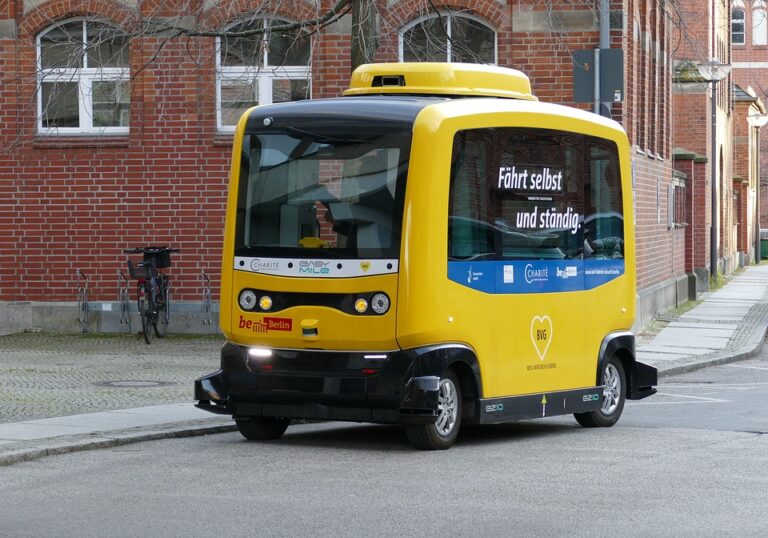The Future is Here: How Autonomous Cars are Redefining Mobility
The advent of autonomous cars is not just the next step in technological innovation; it represents a monumental shift in how society approaches transportation. As we stand on the cusp of a revolution, the implications of autonomous vehicles (AVs) are profound. This article delves into the ways autonomous cars are reshaping mobility, the current trends driving this change, and what the future holds.
Understanding Autonomous Cars
Autonomous cars, commonly known as self-driving cars, utilize a combination of sensors, cameras, and artificial intelligence to navigate without human intervention. With over 27 major companies currently testing in various cities across the globe, the race toward adoption is accelerating rapidly. According to a recent report from Allied Market Research, the autonomous vehicle market is expected to grow from $54 billion in 2019 to a staggering $557 billion by 2026, illustrating the growing momentum and potential of this technology.
The Benefits of Autonomous Vehicles
Safety Improvements
One of the most compelling arguments for adopting autonomous cars is their potential to drastically reduce accidents caused by human error. According to the National Highway Traffic Safety Administration (NHTSA), approximately 94% of serious crashes are due to human mistakes. By removing human error from the equation, AVs can significantly enhance road safety. For example, Waymo, a leader in the self-driving industry, has already reported over 10 million autonomous miles driven without a major accident, showcasing the promise of this technology.
Enhanced Accessibility
Autonomous vehicles also hold exceptional potential to transform mobility for underserved populations, such as the elderly and disabled. With self-driving cars, these individuals can enjoy greater independence and freedom without relying on public transportation or the aid of others. This is not just a matter of convenience; it’s about creating inclusivity in mobility.
Environmental Impact
The environmental implications of adopting autonomous cars are significant as well. A study from the Institute of Transportation Studies at UC Davis highlighted that AVs could help reduce greenhouse gas emissions by optimizing driving patterns and reducing traffic congestion. This shift toward greener transportation aligns perfectly with global goals for sustainable development.
The Challenges Ahead
Despite their promised benefits, the widespread adoption of autonomous cars does face challenges. Legislative hurdles and regulatory frameworks are still in their infancy, with many lawmakers grappling to create policies that ensure safety without stifling innovation. Moreover, public perception remains a significant barrier, as a substantial number of individuals express skepticism about the safety and reliability of AVs.
Real-World Examples: Paving the Way for the Future
Leading tech companies like Tesla and Google’s Waymo are paving the way for this new era of mobility. For instance, Tesla’s Autopilot feature, while not fully autonomous, showcases the potential of integrating self-driving technology into everyday vehicles. These examples provide a glimpse into how radically our transportation systems can evolve, emphasizing the urgency for lawmakers and the auto industry to keep pace with rapid advancements.
What Lies Ahead
As we look toward the future, the integration of autonomous cars into our roadways will likely be gradual but transformative. Cities will need to adapt their infrastructure, and public acceptance will play a crucial role in the roll-out.
Industry Statistics and Projections
Interestingly, a study conducted by McKinsey & Company predicts that by 2030, as many as 15% of global vehicle sales could be attributed to fully autonomous cars. This projection emphasizes the need for manufacturers to invest in technology that prioritizes safety and efficiency. Additionally, as of 2023, over 50% of consumers are interested in using shared autonomous vehicles, according to a survey by Deloitte, revealing a significant shift in consumer attitudes toward embracing new mobility solutions.
Conclusion: Embracing Change
The future is indeed here. Autonomous cars are not merely a technological curiosity; they are reshaping our understanding of mobility, safety, and environmental impact. As this technology continues to evolve, its integration can lead to safer roads, reduced environmental footprints, and greater accessibility for all.
To dive deeper into the evolving world of mobility, check out our articles on the Rise of Electric Vehicles and the Future of Public Transportation. For additional insights, explore trusted sources like NHTSA on Autonomous Vehicles, which explore legislative implications and safety protocols surrounding this revolutionary technology.
Images Suggestions
-
Image of a high-tech autonomous vehicle in an urban setting.
- Alt text: "Autonomous cars redefining mobility in urban landscapes."
- Image depicting a futuristic city with autonomous vehicles on the roads.
- Alt text: "A vision of the future with autonomous cars enhancing urban mobility."
By understanding the dynamics of autonomous vehicles, we can collectively work towards a future that leverages technology for social good while addressing the challenges ahead. The road is evolving, and so must we.


